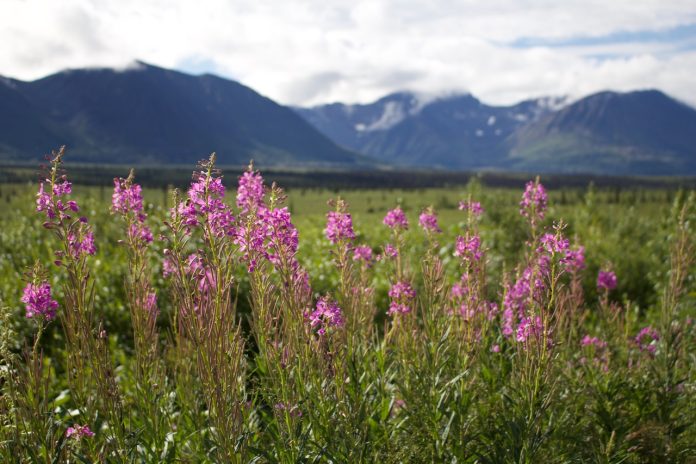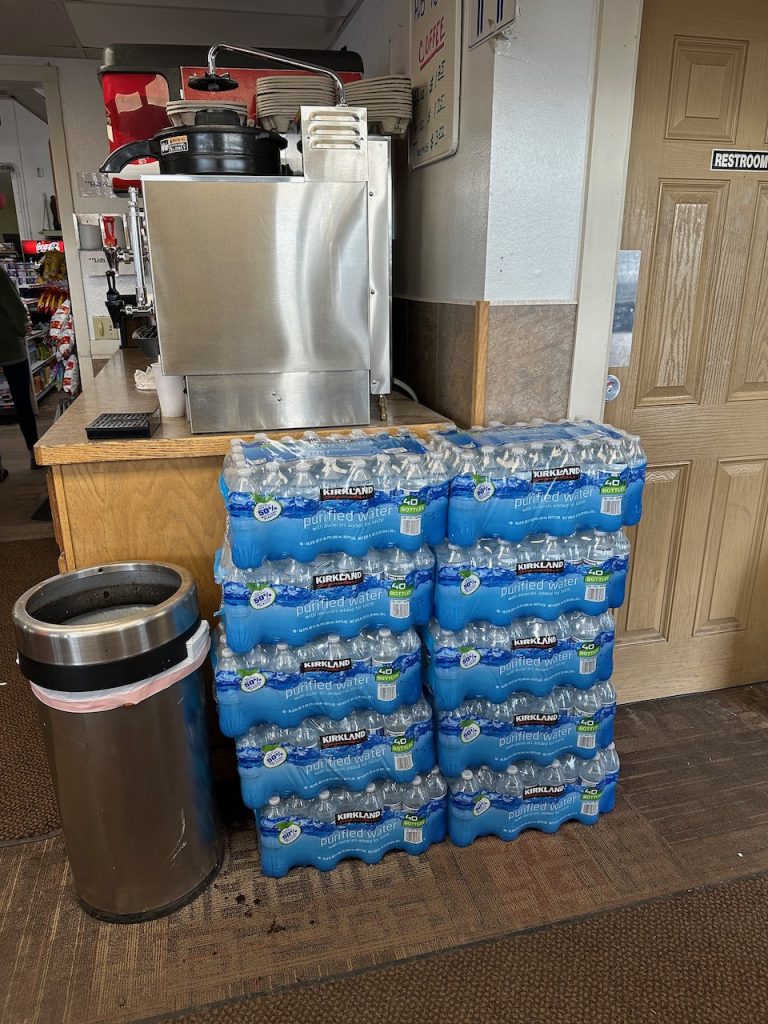Like a giant overhead bin full of cookies and cash, Alaska sits for many as potential salvation. Quietly looming above, it waits as a refuge for the smart and mobile who can escape the inevitable collapse of climate and economy. Too many people think they’re going to see the signs of the American series finale and head up north to save themselves.
It’s an idea we came back to after spending a few weeks in Alaska this summer. Friends, people we consider otherwise pretty smart, would hear about our travels and respond, “That’s where we’re headed when things go to hell,” or “Alaska will be the best place to wait out The End. We’re looking at places.” A good number have never visited the state in person.
I am going to be very clear here: Alaska is not your insurance policy.
For 21 days this summer, we moved into, through, around, over, and back out of Alaska. Our summer road trip took us through a thousand miles of the Inside Passage by ferry, another 4,000 miles of highway by Subaru. There were a dozen museums, twice as many gift shops, four significant hikes, 10 breweries, one distillery, and a possibly haunted hotel. Though I did purchase bear spray, we only saw a cub. But there were a family of moose and quite a few ptarmigan, the fuzzy legged chicken that’s Alaska’s state bird.
The 49th State doesn’t deserve love. It deserves absolute adoration. It’s expansive and pristine and foreboding and lush. It’s breathtaking when you can see a line of mountains behind another line of mountains, then two more ranges in the distance beyond that. Fuchsia pink fireweed spreads through breaks in the cedars, only interrupted by a braid of slate grey rivers. There are places where the road goes hundreds of miles, up and down rolling hills and around a peak, but is never interrupted by a driveway.
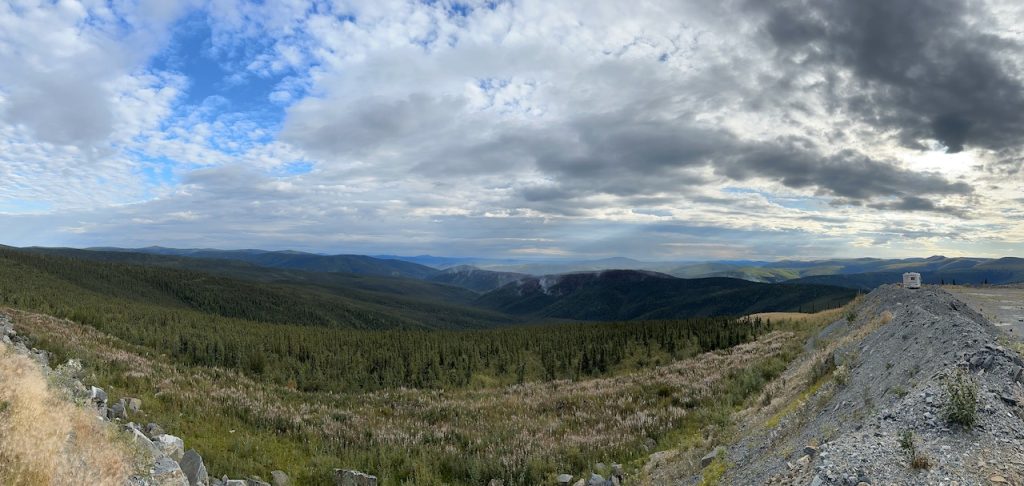
Which emphasizes how empty the state is. The borough of Fairbanks-North Star has 95,000 people in an area the size of Massachusetts. The entire state’s population is less than Seattle proper, with more than half living in metro Anchorage. Everyone you meet at the bar is chatty and generous in a way that makes you think Seattle is the true ice palace. Alaskans have an easiness that comes from seeing heartiness sold as a brand, then actually having to live in the tundra. Also, they can make a mean imperial porter.
The issue is that hearty cuts both ways. A friend described it as “rough, not in the hard sense, but in the ‘taken care of just enough’ sense.” Most of the places where we stayed had bathrooms that looked precisely like my parents had in 1990, down to the light wood wainscoting and striped wallpaper. There’s a reason they charge per minute at the campground showers in Chicken, Alaska. They cart the water in. The neighboring river is for gold prospecting. The number of convenience shops and gas stations reselling Kirkland brand everything is close to 100%. There are a lot of places where picnic tables do just fine, thank you.
That goes, too, for much of the state’s infrastructure. The highways outside major cities are suggestions. A sign that says “dip” makes you question your relationship with gravity. “Major Damage” signs prepare you for low earth orbit. Ice heaves and melting permafrost have roadways crumbling from the inside out, and create rolling buckles that feel much like 75-cents-a-minute Poconos honeymoon hotel vibrating beds. Also, there are only five major cities on the highway loop, if you include Tok, which has good pavement for the 1,200 people living there.
So all that empty space with its people who know how to live through the harshest environmental conditions means the state is ready for continental survivors to roll on up and ride out the apocalypse. Alaska’s new motto should be “Immanentize the Eschaton, The Arctic Awaits!”
Not so fast there, Gerard Butler. The Arctic is a refuge, but not for you. While there is a lot of the state ready to accept your traveling butt (and dollars), that doesn’t mean they are prepared to accept your residential butt and the deadweight it drags behind it. Too much of the state’s infrastructure for tourists depends on the same global supply chains that bring the tourists up there to begin with. Most goods and materials arrive by ship.
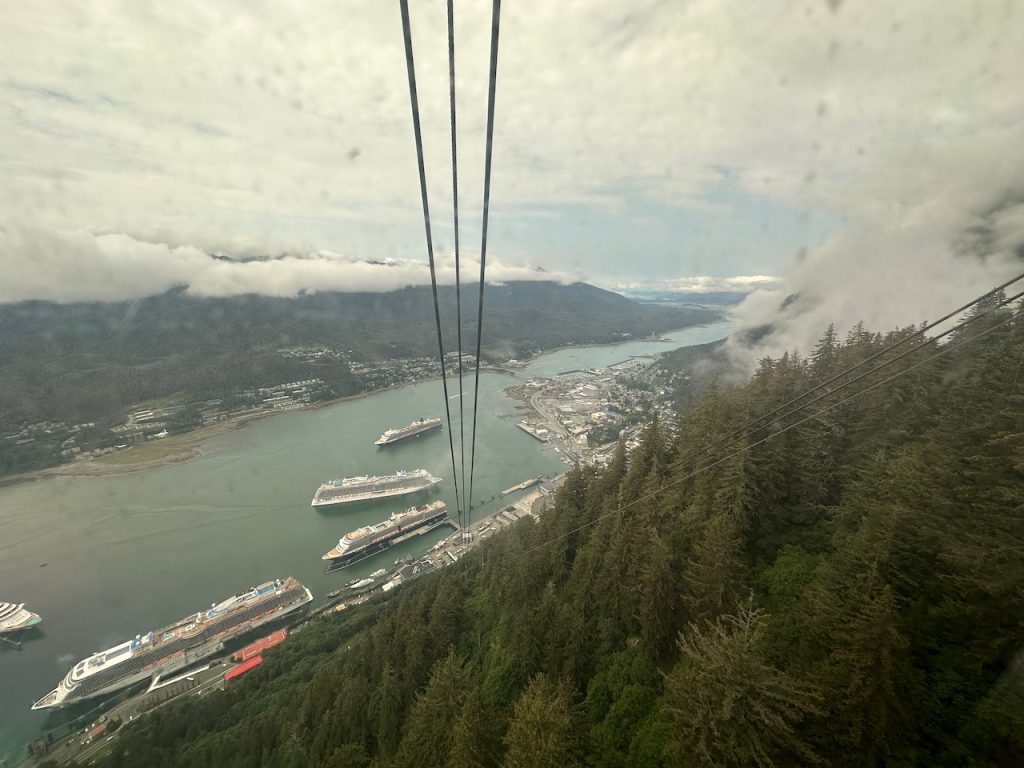
Our trip took us away from those cruise docks. (One bartender in Juneau called the folks coming off the boats as “newlywed, overfed, or nearly dead.”) It was like moving through the wings of a theater when a production is underway. Talking with a few resident Alaskans, including some honest-to-goodness gold prospectors, you get the impression that there’s some sport to doing work that avoids the hardest tourist-impacted areas. Where the global travel industry touched down — Denali, Juneau, and Whittier — the cruises themselves extended onto land where packaged pieces of Alaska were readily available to be taken back on board. Benefits from all those debarked consumers doesn’t extend past a shore-leave timed walk.
Too many people go to Alaska right now to find themselves without fully knowing what they’re looking for. This is a state version of the Manic Pixie Dream Girl trope, where the protagonist is fawned over and saved by a loosely written female character whose traits are entirely defined by mismatched earrings and erratic grocery store tendencies. For many Americans, Alaska is 600-million-square-miles of Natalie Portman in Garden State.
Visiting Alaska this summer had a Last Chance to See sense to it. We dodged glacier floods in Juneau, gale force winds through the Gulf of Alaska, and wildfires and choking smoke in Fairbanks. It’s eerie to be stuck inside a museum with mammoth bones while the air quality is over 400. It started to feel like we were not far from being in the next exhibit.
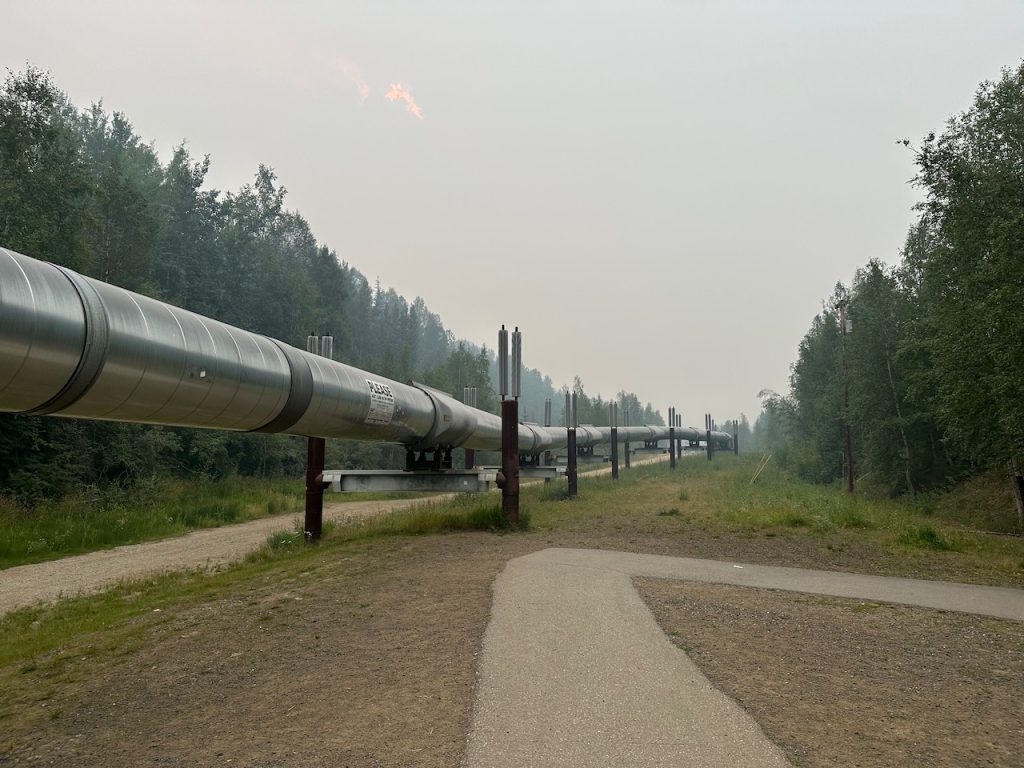
These phenomenon collide in the most late-stage-capitalist ways possible. The prop bus from Into The Wild holds down one end of the beer garden at 49th State Brewing outside of Denali. The real one had to be moved from its location inside the park to a museum so people would stop needing to be airlifted from the site where Christopher McCandless starved to death. Juneau has a row of crisp-fronted jewelry stores with barkers selling “Real Alaska Gold” to cruise tourists just a block down the hill from houses crushed by falling trees. The biggest new building in Wasilla is at a Ford dealership.
Moving through Alaska can be understood in two ways. It can be seen as a wilderness adventure with vistas and overlooks that let you gaze into the human soul. Or it can be seen as a trail through a dozen different types of extraction industries, from gold to lumber to culture. Insinuating yourself can be just another way of taking from this expansive and fragile place.
Visit Alaska. Be a humble traveler and tip well. Go home. Take the heartiness you learned from Alaska and correct the issues in your neighborhood that are giving you visions of a coming apocalypse. Don’t expect the north to hold your reservation for the end of the world that you let happen.
Ray Dubicki is a stay-at-home dad and parent-on-call for taking care of general school and neighborhood tasks around Ballard. This lets him see how urbanism works (or doesn’t) during the hours most people are locked in their office. He is an attorney and urbanist by training, with soup-to-nuts planning experience from code enforcement to university development to writing zoning ordinances. He enjoys using PowerPoint, but only because it’s no longer a weekly obligation.

